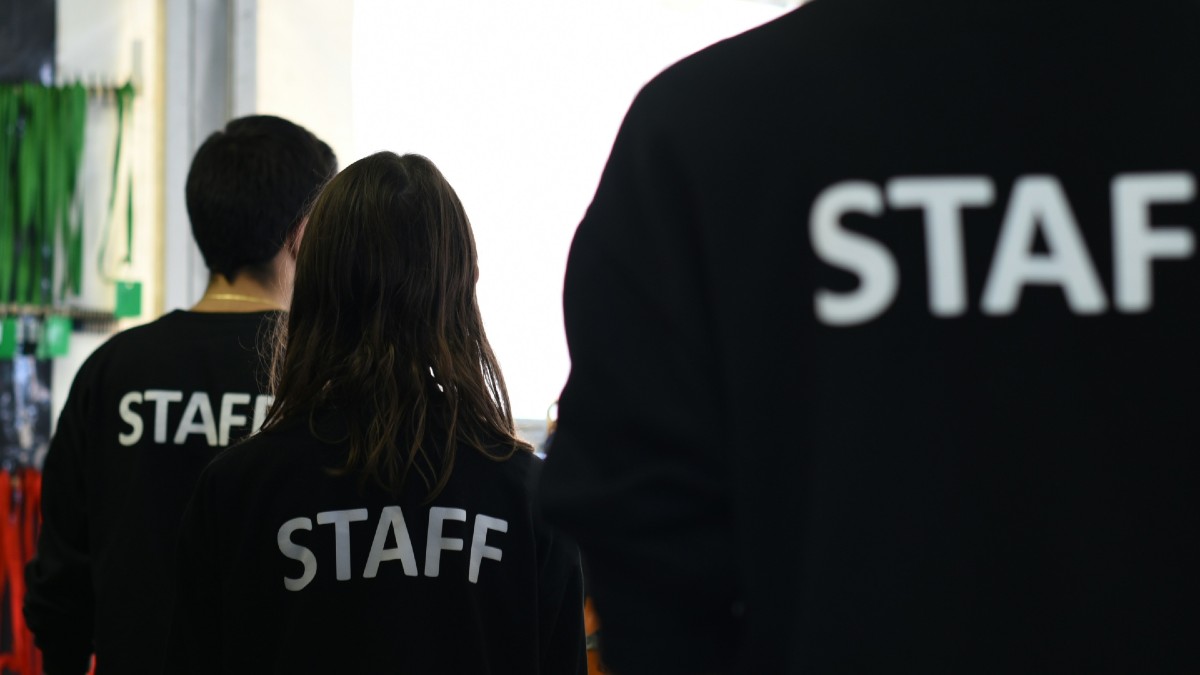
Written by: Cara Tirona
May 7, 2025
Managing guest lists for large-scale events can be overwhelming. From ensuring a seamless check-in experience to keeping crowds under control, every detail matters. Whether you’re planning a corporate conference, a gala dinner, or a product launch, handling high-volume events efficiently requires smart strategies and the right tools.
Understanding the Challenges of Large Event Guest List Management
Large events come with their unique challenges, and being aware of them is the first step toward successful guest list management. Here are some key challenges to consider:
Volume and Complexity
Managing hundreds or thousands of guests can be daunting. Each attendee may have specific requirements, including dietary restrictions, accessibility needs, or plus-one allowances. Keeping track of these details leads to complexity in the guest list that can easily spiral out of control if not carefully monitored.
Check-In Delays
A primary concern in high-volume events is ensuring a smooth check-in process. Long waiting times not only frustrate guests but also contribute to congestion and a negative overall experience. Organisers must devise strategies that allow for quick and efficient check-ins, especially in busy environments.
Communication Gaps
With many guests, it can become challenging to maintain clear and effective communication. Information needs to be relayed promptly to attendees regarding event details, such as schedules, venue changes, or health protocols. Without proper communication, confusion can arise, impacting guest satisfaction.
Data Management
Keeping the guest list accurate and updated is critical. Event planners must deal with RSVPs, cancellations, and changes in guest information, which can lead to significant data management challenges. Organisers must utilise reliable systems to ensure that all information remains organised and accessible.
Security and Safety
In large events, ensuring the safety and security of all attendees is paramount. With a high volume of guests, tracking who enters and exits the venue becomes critical. Organisers need effective systems in place to manage security protocols, identify unauthorised individuals, and maintain order without overwhelming guests or staff. This often requires collaboration with security personnel and the implementation of technology solutions for enhanced monitoring.
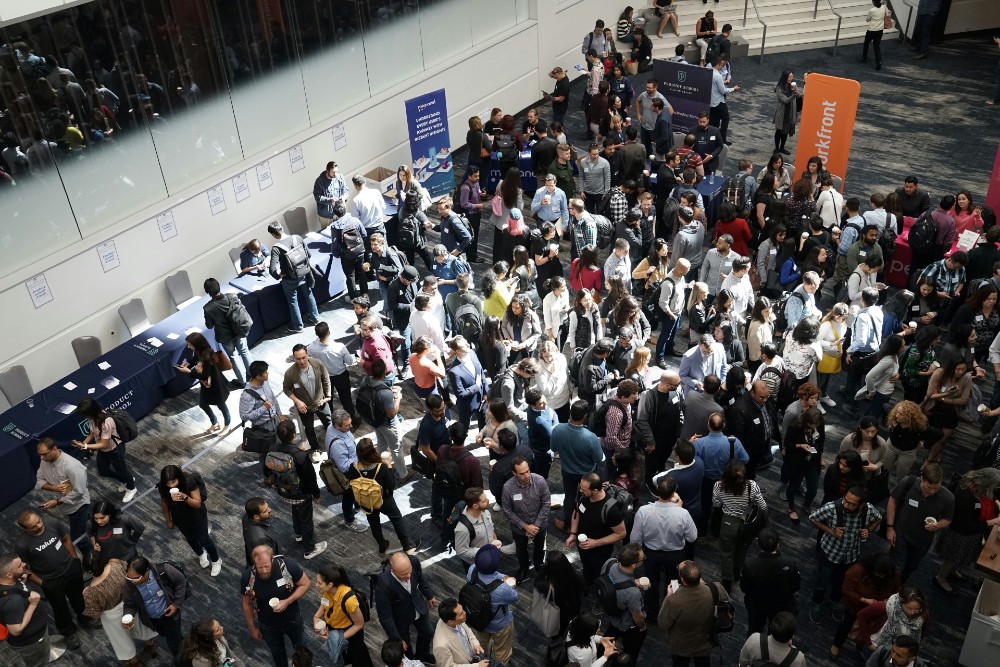
Personalisation vs. Scalability
While it’s important to personalise the guest experience to make individuals feel valued—such as through targeted welcome messages or special accommodations—managing this personalisation across a large group is a delicate balance. Event planners must find efficient ways to provide personal touches without sacrificing efficiency or creating bottlenecks in the overall event experience.
Vendor Coordination
Large events often involve multiple vendors, from catering services to audiovisual teams. Coordinating with various service providers while ensuring they have the proper guest information can be tough. Miscommunication can result in delays, errors, and a less-than-ideal experience. Aligning vendors with guest list specifics and event logistics is crucial for a successful execution.
Last-Minute Changes
High-volume events are often fraught with last-minute changes—be it a sudden increase in attendee numbers, unexpected cancellations, or adjustments in the event schedule. These changes can create a ripple effect that, if not managed efficiently, can lead to confusion and a compromised guest experience.
Managing Large-Scale Events: Best Practices for Event Planners
Efficient Guest Registration and RSVP Management
A well-organised registration process is the backbone of high-volume event guest management. Here are a few hacks to streamline it:
Utilise Technology for Pre-Registration
Leveraging online registration platforms allows guests to register in advance, eliminating lengthy lines and processing delays at the event. Using automated systems can collect crucial attendee information, such as dietary restrictions and special requests, well ahead of the event, ensuring a smoother experience for everyone. Sending reminder emails with registration links can also increase turnout and decrease no-show rates.
Implement a QR Code System
Deploying a QR code system at the event can expedite check-ins significantly. Each attendee can receive a personalised QR code upon registration, which can be scanned at the entrance for fast entry. This not only reduces waiting times but also enhances the overall guest experience. Incorporating a “check-in” feature within the registration app can further streamline the process, allowing for quick real-time data updates.
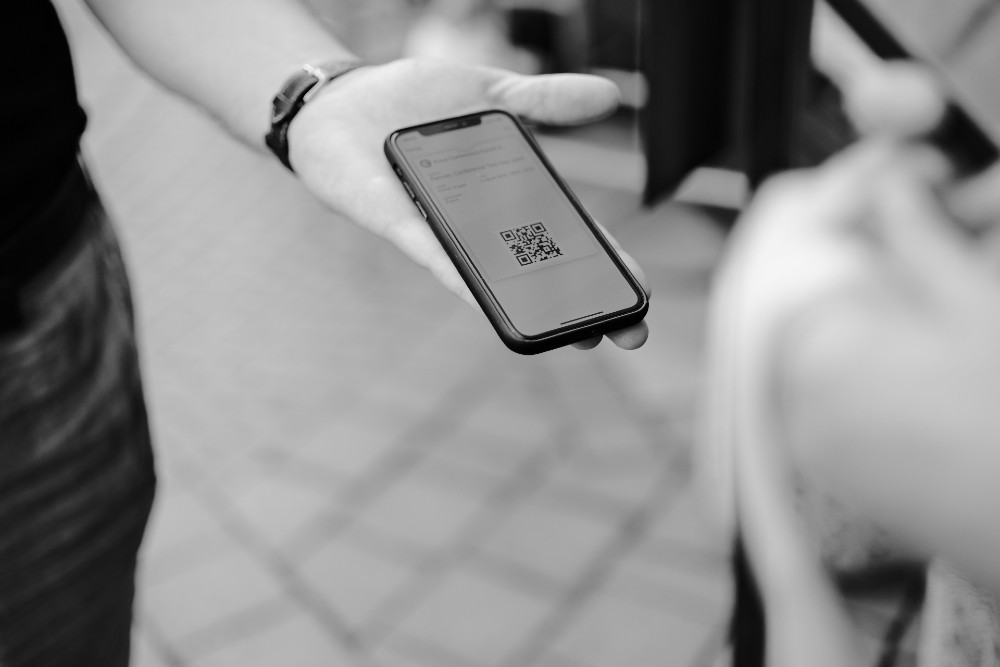
Create a Centralised Guest List
Maintaining a centralised and easily accessible guest list is crucial for coordination. Use event management software that allows real-time updates and can be accessed by team members on different devices. This ensures everyone involved in the event has the most current information at their fingertips, leading to better communication and efficiency. Here are some additional tips for creating and managing a centralised guest list:
Integrate RSVP Tracking
Incorporate an RSVP tracking system within your guest list to monitor who has confirmed their attendance. This allows for timely adjustments to seating arrangements, catering needs, and other logistical elements. Ensure the system can handle changes and automatically notify relevant team members of updates, minimising the risk of miscommunication.
Segment Your Guest List
Segmentation of your guest list based on various criteria—such as VIP attendees, sponsors, or specific groups—can enhance personalised experiences. By categorising attendees, you can tailor communications and services, ensuring that each group's needs are met. For example, VIP guests may require special access or personalised greetings, while sponsors might benefit from prominent signage.
Enable Real-Time Access for Staff
Ensure that all event staff have real-time access to the centralised guest list through mobile devices or tablets. This accessibility empowers staff to quickly verify attendee information, check guests in, or address any issues that may arise during the event. Consider setting up a dedicated communication channel, such as a group chat or a messaging app, allowing team members to share updates and coordinate effectively in real-time.
Implement Multiple Check-In Stations
To combat bottlenecks at a single entry point, set up multiple check-in stations. This can be particularly effective for larger events where high guest volumes can lead to long waits. Here are several strategies to ensure your check-in process runs smoothly:
Designate Clear Signage and Lines
Clearly marked signage directing guests to various check-in stations is essential. This organisation minimises confusion and allows guests to navigate to the correct station quickly. You can also use stanchions to create organised lines, reducing congestion and maintaining a pleasant flow of guests into the event.
Staff Check-In Stations Adequately
Ensure each check-in station is adequately staffed based on expected volume. Having enough team members decreases wait times and enhances the guest experience. Train staff on the check-in software so they can assist with any issues efficiently. Assign roles, such as greeting guests or managing the technology, to streamline the process.
Crowd Control Strategies for High-Volume Events
Managing large groups of people requires thoughtful crowd-control planning. It is essential to ensure the safety, comfort, and enjoyment of all attendees. Here are key strategies to effectively manage crowds during high-volume events:
Use Event Layout Wisely
The physical layout of your event can significantly impact crowd flow and control. Consider the following design strategies to facilitate better movement and comfort:
Zoning Areas for Specific Activities
Establish clearly defined zones for different activities or features within the event, such as registration, food stations, and entertainment areas. By segregating these zones, you can manage the flow of guests more effectively and prevent overcrowding in any one area. Providing maps or digital floor plans can assist attendees in navigating the layout.
Open vs. Closed Spaces
Use open spaces to encourage movement and mingling, while closed-off sections can make areas feel more intimate but may require careful monitoring. Consider how different layouts may influence guest interactions and adjust accordingly to create a balanced atmosphere.
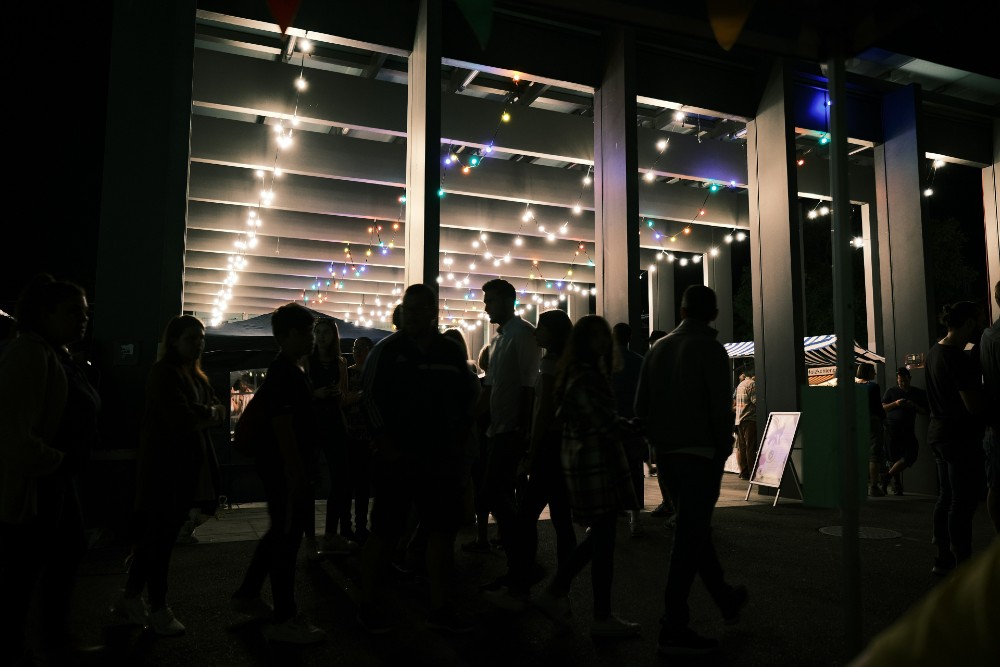
Consider Traffic Flow for Accessibility
When planning your event layout, take into account the natural traffic flow of guests. Allow for wide pathways that accommodate the flow of people, especially during peak times. This will prevent bottlenecks and ensure that guests can move freely between activities. Here are some key considerations:
Entry and Exit Points
Strategically position entrance and exit points to minimise crowding at any one location. If possible, create multiple entry points, ensuring they are evenly distributed around the venue. This approach allows guests to arrive and depart without creating heavy traffic in specific areas.
Pathway Design
Design pathways that lead guests intuitively through the event. Use decorative elements or signage to guide the flow toward key areas, such as food stations or entertainment zones. Curved pathways often encourage exploration and reduce straight-line congestion. This nurturing of curiosity can keep guests engaged while avoiding high-traffic spots.
Incorporate Seating Wisely
While creating an engaging atmosphere, it’s essential to incorporate seating thoughtfully into your layout. Consider the following:
Nooks for Conversation
Create small, cosy seating areas that invite guests to pause and engage in conversation. By placing seating arrangements in various locations throughout the venue, you allow guests to choose between mingling in larger groups or finding a quieter spot for deeper discussions.
Versatile Seating Options
Consider using a mix of seating types, such as lounge chairs, sofas, and bar stools. This variety encourages different styles of interaction and allows guests to select what suits their mood. For instance, lounge chairs promote casual conversations, while bar stools at higher tables encourage more dynamic interactions.
Strategic Placement
Position seating areas close to high-traffic zones without placing them directly in the way of pedestrian movement. For example, placing small clusters of chairs near food or beverage stations can create natural gathering points that encourage guests to relax and converse while they refuel.
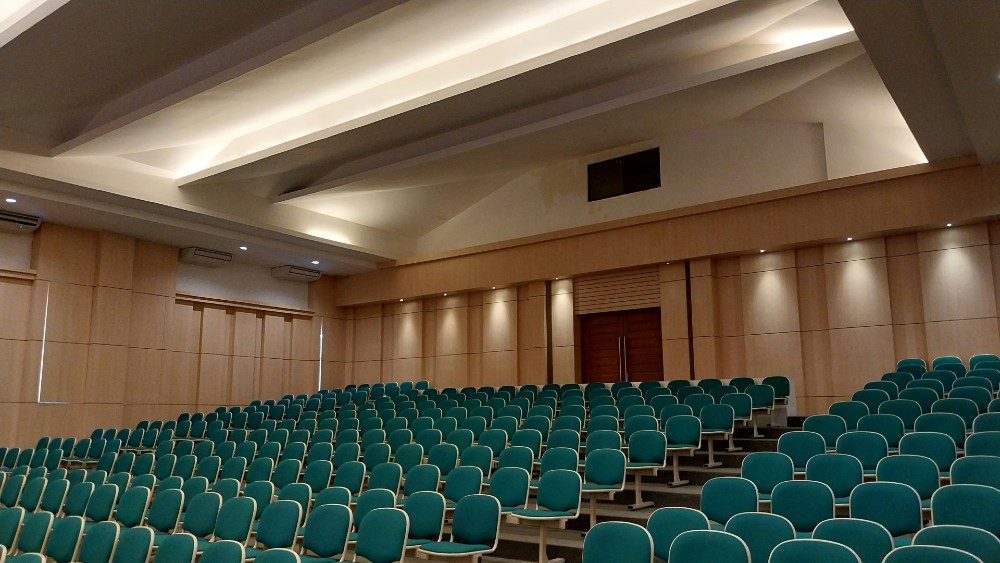
Staffing and Security Measures
Effective staffing and security measures are essential for ensuring a smooth experience at large events, especially when dealing with high-volume guest lists. Here are a few strategies to consider in this vital area:
Visible and Approachable Security
Ensuring that security personnel are visible yet approachable can help create a sense of safety while also promoting a welcoming atmosphere. Train your staff to assist guests with directions, answer questions, and provide general support during the event. This dual responsibility can help minimise potential issues while improving the overall guest experience.
Crowd Management Strategies
Implement crowd management techniques, particularly during peak times or in high-traffic areas. This might include assigning security staff to direct foot traffic and manage lines effectively, ensuring that guests move smoothly through the venue without feeling confined or overwhelmed. Consider using barriers or stanchions to guide guests in an organised manner, preventing bottlenecks and confusion.
Emergency Protocols and Training
Prepare for unexpected situations by establishing clear emergency protocols and ensuring all staff, including security personnel, are well-trained in these procedures. Hold briefing sessions before the event to review roles, responsibilities, and emergency exit locations. Familiarising staff with the venue layout will enable them to respond quickly and efficiently if issues arise, ultimately keeping guests safe and informed.
Conclusion: Plan Smarter, Not Harder
Handling high-volume events successfully boils down to efficient planning, the right technology, and strategic crowd management. By optimising guest registration, using contactless check-in solutions, and ensuring seamless crowd control, you can create a smooth and enjoyable experience for attendees.
VenueNow can help you find the ideal venue that accommodates large crowds with ease. Whether you need a spacious conference hall, a high-tech event space, or a venue with advanced security measures, VenueNow simplifies the search and booking process.
Find and book the perfect venue for your next high-volume event with VenueNow today!
Looking for an event venue to hire?
VenueNow has you covered with over 2,000 venues across Australia ranging from large event spaces to small meeting rooms. Find your perfect venue for hire faster than anywhere else.
Follow us on social media to stay up to date with the latest news
Customers
Want to get in contact?
Call our support team on 1300 647 488 during business hours AEST.
© Copyright VenueNow 2025 | SPARE GROUP PTY LTD | ABN 22 607 830 302



